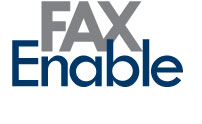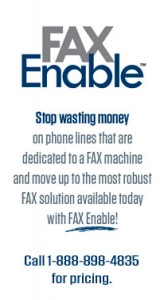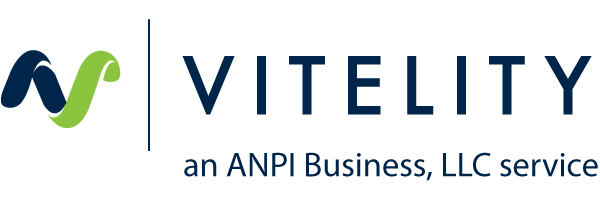As companies migrate to using VoIP, the most common problem is how to deal with their existing FAX needs. At first, most people try to connect a regular ATA (analog telephone adapter) to their FAX machine and send the FAX transmissions over their VoIP provider. While this may have limited success in some cases, the vast majority of the time this will provide for a very unreliable solution. The Holy Grail of FAX was thought to be the T.38 protocol, which uses data packets instead of analog modulation, but it has its share of issues as well. First off, we need to look at why these solutions don’t work well and then at how Vitelity’s vFAX and FAX Enable products solve this problem.
It’s The Network’s Fault
Well, actually the problem is that sending/receiving FAX messages is a real-time process. While the sending FAX machine is sending, the receiving side is capturing the information and assembling the image to be printed. If there is any interruption in the communication stream, the FAX will fail. In a traditional FAX machine using analog phone lines, FAX transmissions can fail due to poor call quality or noise on the line. In a situation using an ATA, jitter or packet loss on the data stream can cause the FAX to fail. While a voice call can handle a few packets lost now and then (they can often be undetected during the call) with a FAX, any data lost is going to affect the FAX.
T.38 To The Rescue
The T.38 protocol was designed to provide a raw data method to transmit FAX’s. In theory, this should work well because the data network is designed for the transmission of data where the voice network wasn’t.
Since the vast majority of FAX machines in existence today do not have T.38 built in, any FAX machine starts off the call as a regular analog call. If both sides of the call support T.38, the call will still start as an analog call and in theory, will switch to T.38 when the call is then detected as being a FAX. Due to variances in fax-detection timings, this transition does not always go smoothly and sometimes not at all.
The second part of this issue is that VoIP calls typically use UDP which is a “streaming” protocol that does not have inherent packet loss correction and is susceptible to jitter. T.38 tried to avoid this by means of allowing for redundant packets to be sent. In theory, this repetition of data will reduce the possibility of problems due to packet loss. If there are problems with the network, jitter or congestion, this can still cause problems with T.38.
The Vitelity Solution
 The original solution for FAX from Vitelity was vFAX. vFAX is a cloud-based FAX solution that offers a web-based send/receive option, FAX to E-Mail, E-Mail to FAX, and a Windows Desktop App to send/receive FAXs and manage the FAX archives. By completely avoiding the voice network and the issues with real-time transmission, vFAX has been a popular option for Vitelity customers for several years.
The original solution for FAX from Vitelity was vFAX. vFAX is a cloud-based FAX solution that offers a web-based send/receive option, FAX to E-Mail, E-Mail to FAX, and a Windows Desktop App to send/receive FAXs and manage the FAX archives. By completely avoiding the voice network and the issues with real-time transmission, vFAX has been a popular option for Vitelity customers for several years.
What vFAX didn’t do was to integrate with the millions of users that still wanted to use their existing FAX machines. The transition to scan-and-send was often clunky, hard to use or was not possible to use due to different legal reasons. What we needed was a hybrid of traditional FAX machines with the vFAX service.
Vitelity’s latest product, FAX Enable offers the best of both worlds with the convenience of a FAX machine and with the robust features and reliability of vFAX.
How Does It Work
 FAX Enable is a very simple solution for the user but required some complex technology behind the scenes to make it all work. The FAX Enable device connects to the phone line port on the FAX machine and then connects to your Ethernet network. The FAX Enable device creates a HTTPS connection to the Vitelity Data Center where the FAX is processed and then sent out over the PSTN (public telephone network). By utilizing HTTPS, the entire transaction is encrypted; security is implemented throughout the transmission. Along with our “secret sauce” to ensure that the entire FAX message is sent, FAX Enable ensures that the FAX is properly delivered to the Vitelity Data Center.
FAX Enable is a very simple solution for the user but required some complex technology behind the scenes to make it all work. The FAX Enable device connects to the phone line port on the FAX machine and then connects to your Ethernet network. The FAX Enable device creates a HTTPS connection to the Vitelity Data Center where the FAX is processed and then sent out over the PSTN (public telephone network). By utilizing HTTPS, the entire transaction is encrypted; security is implemented throughout the transmission. Along with our “secret sauce” to ensure that the entire FAX message is sent, FAX Enable ensures that the FAX is properly delivered to the Vitelity Data Center.
In our testing, we routed FAXs from Denver, Colorado through numbers in Alaska and back to numbers in Colorado then out to FAX Enable devices. During our battery of tests, our 85 page test FAX of mixed text and graphics never had a single failure. FAX Enable & vFAX offer a compelling solution to the FAX problem.
The vFAX service costs only $3 per month per DID and $0.03 per minute. The FAX Enable device is a one-time charge of $149. For the typical FAX user, the average cost of a phone line in the US is $55/month. With FAX Enable and vFAX, these customers will save approximately $550 per year off their existing FAX lines.
For more information, or to order vFAX w/FAX Enable, please contact us at (888) 898-4835.
